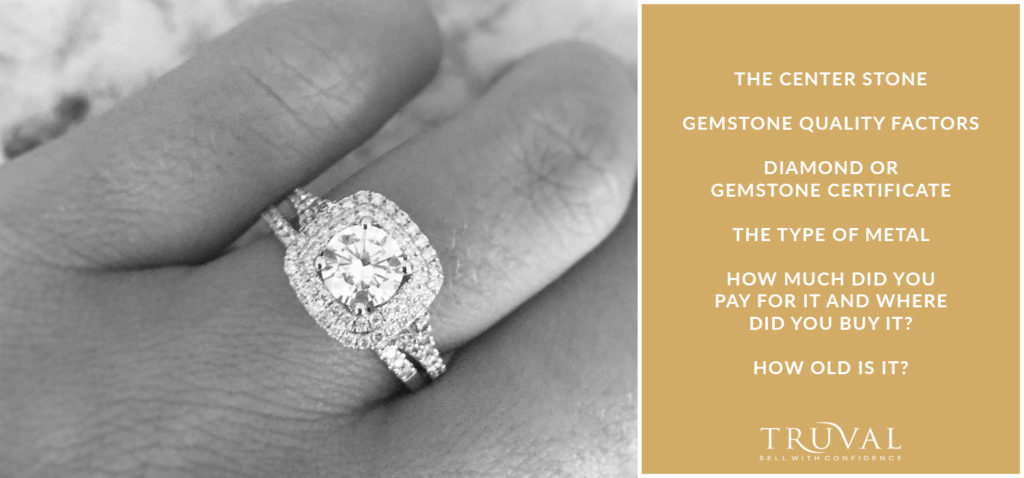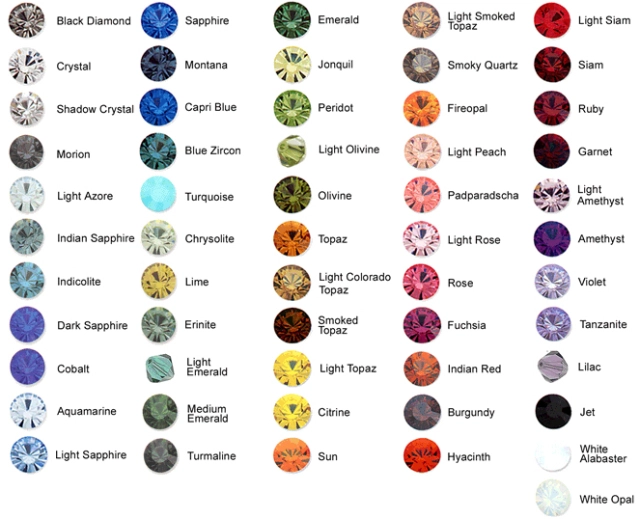Selling your jewelry is always a great way to make some quick cash.
Even if you aren’t thinking of selling your ring, it’s still important to have an answer to the question “how much is my ring worth” for insurance purposes or even simple interest.
Either way, if you want to figure out the value of your ring, you’ll need to think like an appraiser.
How Much is My Ring Worth?

Many factors determine the cost of your ring. If you want a solid answer to the question “how much is my ring worth,” your best option is to get it appraised.
A qualified professional has the proper skills and education to evaluate the jewelry. This way, you’ll know exactly what you should be asking for it should you want to sell it.
An appraiser will take many factors into consideration such as the center stone, diamond certificates, where you bought it, how much you paid for it, and how old it is.
Still, this doesn’t mean you can’t do a general evaluation on your own. Even if you don’t want to sell the jewelry, it’s still nice to know exactly how much your ring is worth — even if only for bragging purposes.
The Center Stone
It’s common for rings to have one large stone in the center. If yours does, what type of gemstone is it? Different gemstones are worth different amounts of money per carat.
Many people think diamonds are some of the most valuable gems. They’re certainly up there at $2,000 to $15,000 per carat, but white diamonds rank well below a handful of other gemstones.

A gemstone’s value mainly depends upon its rarity. Red diamonds are some of the most valuable gemstones in the world at about $1,000,000 per carat. Other pricey stones include fire opal, benitoite, and red beryl.
Rubies can range in price from $100 to nearly $15,000 per carat. Sapphires prices also vary drastically between $20 to several thousand per carat.
Gemstone Quality Factors
The value of diamonds and other precious stones depends upon four factors: carat (weight), color, cut, and clarity otherwise known as the four Cs.
Some gemstones, like opals, have additional quality factors due to their unique mineral deposits.
1. Color: Each gemstone variety has its own ideal color.
When it comes to diamonds, white is best and any yellow or brown tints can reduce the stone’s value. Unless, of course, the diamond is of a naturally occurring blue or red variety.
Artificially colored diamonds don’t hold the same value. As a general rule: the rarer and more aesthetically appealing, the higher the price.
2. Clarity: With many gemstones — and especially diamonds — the clearer the better. If the stone is cloudy that can decrease its value.
Appraisers also look for discrepancies both inside and outside the gemstone. Blemishes appear on the stone’s exterior while inclusions are inside the stone’s structure. The Gemological Institute of America (GMI) has a special chart for grading a diamond’s clarity.
In other gemstones, like opals, experts usually revere opaqueness instead of clarity.
3. Cut: A stone’s cut doesn’t necessarily refer to its shape but rather the structure and inferior facets. In a transparent stone like a diamond, the appraiser will look at the stone’s symmetry and brilliance.
The cut also refers to the stone’s polishing and exterior structural points such as the table, crown, girdle, and pavilion.
4. Carat: Carats refer to the stone’s weight. One carat weighs 0.2 grams.
It’s important to keep in mind that larger stones are significantly more valuable than smaller stones. So the price per carat amount increases as the size of the stone increases.
Larger stones are much rarer than smaller ones so this is taken into consideration when determining their price per carat.
5. Additional factors: In some stones, experts look for color patterns, textures, and other factors relative to the specific variety.

Diamond or Gemstone Certificate
When you bought your ring, you may have received a certificate of authenticity for the diamond or gemstone.
A handful of organizations evaluate and certify gemstones. The most reputable organizations include the Gemological Institute of America (GIA), HRD Antwerp, the International Gemological Institute (IGI), and Gemological Science International (GSI).
Each organization differs in its evaluation techniques and many have their own scales for measuring clarity, cut, and color.
If you don’t have a certificate, you can send your stone to an organization’s lab for testing and evaluation. This might be worth considering if you’re wondering “how much is my ring worth” and you think it may hold significant value.
The Type of Metal
The value of your ring’s metal varies even more than that of the gemstone’s. This is because metals like gold are traded on the open market and their value fluctuates — sometimes drastically — every day.
Most rings are made with either gold, silver, or platinum. Each metal has its own criteria for measuring purity.
Gold, for example, uses the karat system. The higher the karat, the purer the gold. Although 24 karat is the stereotypical ideal, this level of gold is uncommon and somewhat undesirable due to its softness.
Most silver jewelry has the purity percentage stamped into the piece.
People tend to think that platinum is more valuable than gold, but this is not always the case. Platinum is actually much more abundant than gold but it is more expensive to produce. As a result, sometimes gold is worth more than platinum and sometimes it’s not.
Experts will also take the ring’s design into consideration. Jewelry with labor-intensive intricate patterns is usually worth more money than a simple band.
How Much Did You Pay for It and Where Did You Buy It?
When you visit an appraiser and ask “how much is my ring worth,” they’ll probably ask where you bought it and how much you paid.
Unfortunately, you’ll likely only receive between 20% and 45% of what you originally paid. This is because all buyers need to turn a profit from the transaction and preowned jewelry doesn’t sell as well as new jewelry.
There is, however, an exception to this: brand recognition.
Brand names matter when it comes to jewelry. If you have a piece from Cartier or Tiffany & Co., for example, you may receive closer to 50% of your original price provided you have the original packaging and paperwork.
How Old Is It?
If you have a vintage or antique ring, you can throw many other factors on this list out the window.
Vintage jewelry includes anything between 20 and 100 years old. Antiques are anything older than 100.
If you think you have a valuable vintage or antique piece, you should seek out an expert appraiser to help you understand the ring’s origin and price.
A skilled appraiser should also understand the changing trends and history relative to vintage jewelry.
How to Get the Best Price

If you want to get the best price for your ring, where you go matters.
Seek out second opinions from appraisers to make sure they don’t miss anything. After you get a good idea as to what the ring’s worth, you need to find someone to buy it.
You’ll get the most amount of money if you seek out a buyer on your own. Unfortunately, this method also requires a lot of legwork. You could try Craigslist and eBay, but many buyers on these platforms may not understand the significance of your ring’s value so you still may not get exactly what you are looking for.
Pawn shops usually don’t pay very high either because they often sell gemstones and metals to jewelers or smelters to melt down.
Consignment centers and pawn shops can help you sell the jewelry, but they usually take a cut.
Your best bet is to try a variety of options. Contact jewelers and other third-party sellers to see who can give you the best offer.
So, How Much is My Ring Worth?
The price of your ring depends on many factors including gemstones, type of metal, age, and original price.
Your ring’s gemstones and metal should be evaluated individually for a variety of factors. The value of metals depends upon their purity. Gemstones, on the other hand, have many quality factors including clarity, cut, and color.
Antique pieces are significantly more valuable than modern rings. Brand name also matters quite a bit.
If your ring includes rare or large gemstones and is particularly stunning, it could probably fetch you a pretty penny.
At the end of the day, jewelry is all about rarity and beauty.
